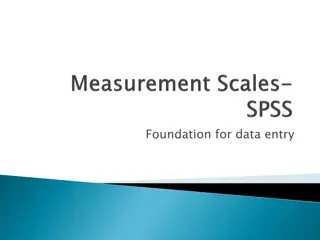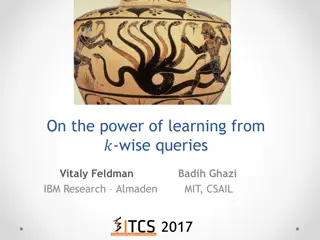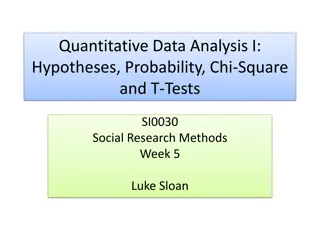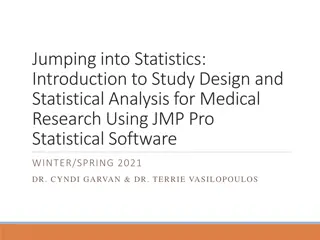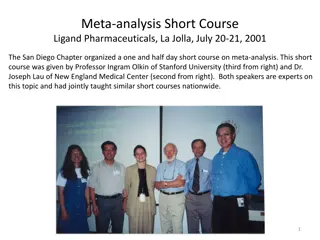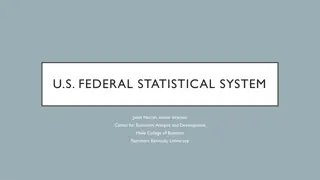Measurement of Outcome Strategies - Statistical Analysis & Study Planning
Strategies for defining study populations, planning studies, and evaluating treatment success for individual patients. Importance of considering chemotherapy success in outcome measures and addressing neuropathy throughout chemotherapy duration.
Download Presentation

Please find below an Image/Link to download the presentation.
The content on the website is provided AS IS for your information and personal use only. It may not be sold, licensed, or shared on other websites without obtaining consent from the author.If you encounter any issues during the download, it is possible that the publisher has removed the file from their server.
You are allowed to download the files provided on this website for personal or commercial use, subject to the condition that they are used lawfully. All files are the property of their respective owners.
The content on the website is provided AS IS for your information and personal use only. It may not be sold, licensed, or shared on other websites without obtaining consent from the author.
E N D
Presentation Transcript
Michael P. McDermott, Ph.D. University of Rochester Medical Center
Measurement of outcome Strategies for statistical analysis Defining the study population Study planning
What constitutes treatment success for an individual patient? Absence of neuropathy Less severe neuropathy Less time with neuropathy Less time with moderate/severe neuropathy Ability to complete chemotherapy regimen without interruption and with minimal discomfort Good response considering both cancer-related and neuropathy-related outcome
Why do current measures of outcome largely ignore the dimension of chemotherapy success? Off-target effect Expectation of minimal effect on this dimension Chemotherapy success is more important to the individual patient than the management of neuropathy A composite that includes both dimensions may be useful
Time to neuropathy (prevention trial) may or may not be a meaningful outcome If the neuropathy is mild and transient, preventing it is less important Presence or severity of neuropathy at a fixed time point (or at selected time points after chemotherapy) may not adequately account for the duration of neuropathy symptoms or the overall severity throughout the course of chemotherapy
It would seem important to consider both severity and duration of neuropathy throughout the course of chemotherapy Applies to either prevention or acute treatment Area under the severity-time curve (AUC) Would still be useful even if neuropathy is transient Distribution may be zero-inflated in prevention studies Can be normalized to accommodate different durations of chemotherapy regimens How frequently can symptoms be measured?
Complication of interruption/discontinuation of chemotherapy For AUC, this may raise a missing data issue What is the estimand? AUC, regardless of interruption/discontinuation of chemotherapy AUC under the assumption that chemotherapy was not interrupted/discontinued Problems with pro-rated AUC
Complication of interruption/discontinuation of chemotherapy Reason for interruption/discontinuation Easy to ascertain? Not neuropathy-related Keep measuring neuropathy symptoms Interruptions/discontinuations will happen in both groups Stop measuring neuropathy symptoms (Multiple) imputation of missing portion of AUC Base imputation on severity trajectory in similar people who completed chemotherapy (missing-at-random)? Neuropathy-related Imputation becomes more complicated Worst-case imputation? Sensitivity analyses
Should include all randomized participants in the treatment groups to which they were originally assigned (ITT principle) Important to preserve the benefits of randomization Should avoid attempting to adjust for post- randomization outcomes (e.g., cumulative dosage of chemotherapy) Incorporate interruption/discontinuation of chemotherapy into the outcome variable
Joint rank analysis (Finkelstein and Schoenfeld, 1999) Commonly used in trials of amyotrophic lateral sclerosis (ALS) Useful for analyzing continuous outcomes that may be censored by a more important event Decline in function / mortality in ALS AUC / interruption/discontinuation of chemotherapy in CIPN Best if the treatment has effects on both outcomes Opposite effects on the two components could make the analysis very misleading
Joint rank analysis Rank all participants from worst to best outcome Assign worse ranks to those who discontinue (or interrupt?) chemotherapy due to neuropathy earlier Assign ranks to the remainder (those who complete chemotherapy on schedule) based on AUC Compare distribution of ranks between treatment groups Assumption here is that time to discontinuation of chemotherapy due to neuropathy is of greater importance
Would ideally want to target those at higher risk of experiencing neuropathy due to chemotherapy Heterogeneity in cancer type, chemotherapy type, chemotherapy dosage, and chemotherapy duration Cleaner to have within-study homogeneity, but recruitment may become difficult Stratification by some of these factors may be important if they are allowed to vary within the study
Need extensive natural history data (or even better, data from placebo groups in past trials) Allows one to tailor the planning to specifics of the study design Use of adaptive design for sample size re- estimation
Effect size of importance to detect Depends on outcome variable For joint rank analysis, power depends on P(X > Y), where X and Y are ranks of randomly selected participants in treatment and placebo groups, respectively


